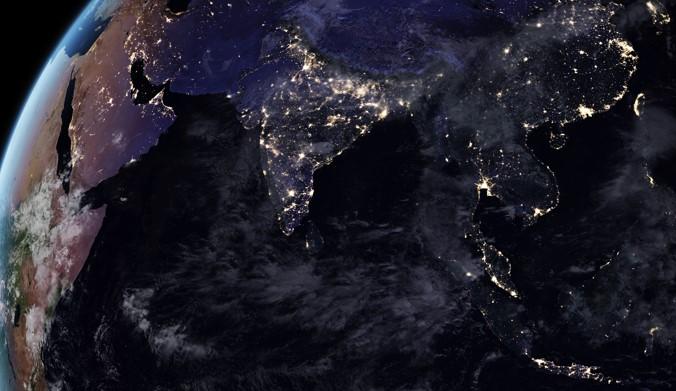
By building up the notion of the Indo-Pacific as a critical region, Shinzo Abe, the late Japanese prime minister, created a strategic framework that presaged the geopolitical and economic integration now taking place across Asia and parts of Africa. As South Asian and Middle Eastern countries merge into West Asia, a new continental order could reshape the global balance of power.
During his first visit to India as prime minister, in August 2007, Abe delivered his seminal ‘Confluence of the two seas’ speech to the Indian parliament. Abe drew his speech title from a book written by the Mughal prince Dara Shikoh in 1655, which explored the commonalities between Islam and Hinduism as neighbouring religious and civilisational constructs. The Pacific and Indian Oceans also share many commonalities, Abe noted. The ‘dynamic coupling’ of these ‘seas of freedom and of prosperity’ would transform not only the Indo-Pacific region but also ‘broader Asia’.
But Abe, who was assassinated last July, had more than just maritime metaphors in mind. His overarching goal was to build the most consequential bilateral relationship in the Indo-Pacific: India and Japan. As one of the first Asian leaders to recognise the global and regional impact of China’s rise, Abe went on a one-man crusade to create a viable new balance of power. By expanding the geopolitical dimensions of the Asia–Pacific region and pushing it westward towards the Indian Ocean, he helped shift the region’s strategic profile.
Abe’s 2007 speech highlighted the intellectual vacuum in Washington at the time. While the United States was at the height of its ill-fated ‘war on terror’ and mired in two protracted, costly wars in Iraq and Afghanistan, Abe sought to redefine the Indo-Pacific on Japan’s terms, as a rival to the China-centric ‘community of common destiny’.
For Abe and his successors, fostering cooperation across the Eurasian and African rimlands through extensive networks of defence and trade ties was the key to realising the vision of a broader Asia. In placing the Indo-Pacific at the heart of this vision, they drew on the insights of the 19th-century American admiral Alfred Mahan and the British naval historian Julian Corbett.
Mahan and Corbett, the pioneers of modern naval strategy, viewed sea power as an essential source of national strength. The 20th-century political scientist Nicholas Spykman emphasised the strategic centrality of the Eurasian rimland, in contrast to Halford Mackinder’s insistence on the centrality of the Eurasian heartland. Together, Mahan’s and Corbett’s writings on sea power and Spykman’s maritime-based approach to geopolitics provided the intellectual foundations for Abe’s broader Asia.
Today, the clearest manifestation of Abe’s Indo-Pacific strategy is the Quadrilateral Security Dialogue, better known as the Quad, which began as a humanitarian initiative when the US, Australia, India and Japan formed a joint relief operation following the deadly tsunami that devastated Indonesia in 2004. After his re-election in 2017, Abe repurposed it as a vehicle for his geopolitical vision.
But the Quad was only the beginning. It has been followed by a series of ‘minilateral’ institutions, including the AUKUS defence pact between Australia, the UK and the US; the US–Australia–Japan Trilateral Strategic Dialogue; trilateral cooperation between Australia, Indonesia and India; and a joint Italy–Japan–UK fighter-jet project. These initiatives, all of which aim to boost security and stability across the Indo-Pacific, reflect the region’s ongoing transformation into a ‘geography of strategies’.
After the Iraq War and Arab Spring pushed Arab states to diversify their alliances and partnerships and decrease their reliance on the US, Asian countries such as China, Japan, India, Indonesia and South Korea rushed to fill the vacuum. The United Arab Emirates and Saudi Arabia, for example, are India’s third– and fourth-largest trading partners, respectively. Japan has become a trusted regional leader in technology, clean energy and space exploration. And South Korea is now a major supplier of technology and arms to the Gulf states and Egypt. Deepening defence and trade ties, together with the Gulf states’ growing clout, have accelerated the Middle East’s integration into the Asian economic sphere.
While Abe sought to offset China’s rising power by redefining the Asia–Pacific region, strategists and intellectuals (including me) have been trying to establish a regional balance of power by expanding the geopolitical definition of the Middle East to include India and other South Asian countries. The Abraham Accords between Israel, the UAE and Bahrain; the Negev Forum; the I2U2 summit comprising India, Israel, the UAE and the US; and the France–UAE–India trilateral framework all point to a fledgling Indo-Abrahamic alliance between India, Israel and the Arab states.
The introduction of India into the Middle East’s political and economic domain is an extension of the geostrategic model Abe championed in his ‘Confluence of the two seas’ speech. With India as the link between the Indo-Pacific and the Indo-Abrahamic countries of West Asia, a continental Asian order is beginning to take shape.